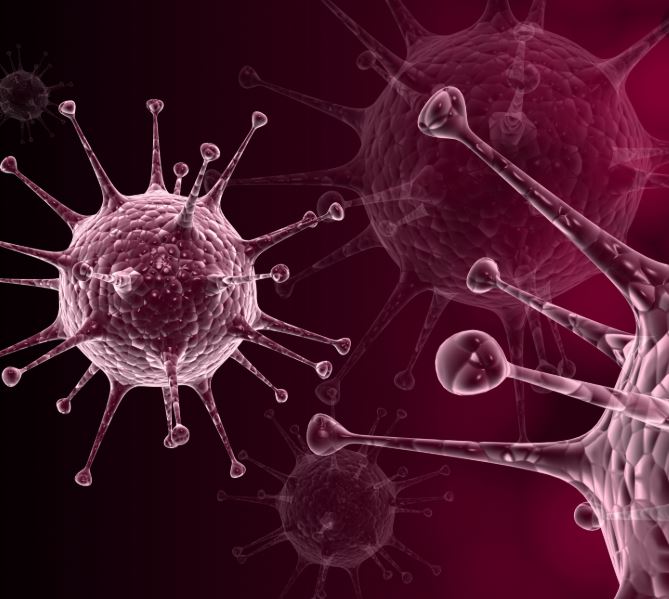Oncolytic Viruses in Glioblastoma Treatment
Introduction of Glioblastoma
Glioblastoma is a type of brain cancer and it is usually very aggressive. It's the most common type of malignant brain tumor among adults. The symptoms of glioblastoma include constant headaches, seizures, vomiting, trouble thinking, changes in mood or personality, double or blurred vision, trouble speaking. Glioblastoma is associated with poor prognosis and the mean survival time is 15 months after diagnosis. The diagnosis by magnetic resonance imaging (MRI) or computed tomography (CT) is always depending on patients' symptoms. The current standard of treatment includes surgery, radiation, and chemotherapy using temozolomide. No targeted antibodies or drugs have been demonstrated to be more efficient than temozolomide. According to recent phase III trials, standard therapy may ensure a median overall survival of up to 18-20 months for adult patients with newly diagnosed glioblastoma. A high rate of failures in clinical trials and a lack of effective chemotherapy have driven scientists to develop distinct therapeutic approaches, including immunotherapy, chimeric antigen receptor (CAR) T-cell therapy and oncolytic virotherapy.

Oncolytic Virus for Glioblastoma Treatment
Different oncolytic viruses have been tested in glioblastoma and proved feasibility and safety. Here present several phase I/II trials in recurrent glioma patients and demonstrated remarkable efficacy in subsets of patients.
- Adenovirus DNX-2401
- Polio-rhinovirus Chimera (PVSRIPO)
- Oncolytic H-1 Parvovirus (ParvOryx)
- Toca 511
DNX-2401, Ad5-Delta-24-RGD or tasadenoturev, is an infectivity-enhanced and replication-competent oncolytic adenovirus 5 (Ad5)-based vector. In a randomized phase Ib trial of DNX-2401 versus DNX-2401 with interferon-gamma (IFN-γ) for recurrent glioblastoma, the 1- and 1.5-year overall survival rates was 33% and 22%, respectively. Further, intratumoral Ad-RTS-hIL-12 is an inducible adenoviral vector engineered to express human interleukin 12 (hIL-12) in the presence of the activator ligand veledimex. A phase I trial of intratumoral Ad-RTS-hIL-12 in pediatric patients with recurrent or progressive grade III/IV glioma demonstrated good tolerability of controlled local IL-12 expression.
PVSRIPO targeting the poliovirus receptor CD155 represents a replication-competent attenuated poliovirus type 1 with its internal ribosome entry site substituted for that of human rhinovirus type 2. This internal ribosome entry site replacement ablates neurovirulence of PVSRIPO preventing propagation in neurons. In phase I trial of PVSRIPO, a total of 61 recurrent malignant glioma patients were treated with intratumoral infusion of PVSRIPO by convection-enhanced delivery. The overall survival rate was 21% at 24 and 36 months after reaching a plateau at 24 months. Besides, a randomized phase II trial of PVSRIPO only or in combination with single-cycle lomustine in patients with recurrent grade IV malignant glioma is ongoing.
ParvOryx was tested in phase I/IIa dose-escalating trial with different routes of administration in patients with recurrent glioblastoma. Eighteen patients were treated with ParvOryx via intratumoral or intravenous injection, then tumors were resected 9 days after treatment, and parvovirus was re-administered around the resection cavity. The median overall survival was 15.5 months after the first ParvOryx treatment. Tumors from 6 ParvOryx-treated patients displayed strong CD8+ and CD4+ T lymphocytes infiltration.
Toca 511 is a retroviral replication-competent vector based on murine leukemia virus encoding the yeast cytosine deaminase, which converts the antifungal drug 5-fluorocytosine into the antineoplastic drug 5-fluorouracil. In phase I trial of Toca 511, patients with recurrent high-grade gliomas were treated with Toca 511, followed by cycles of oral 5-fluorocytosine. The 1- and 2-year survival rates were 65.2% and 34.8%. Several other ongoing clinical trials in adult patients with recurrent glioblastoma/glioma include a phase I trial of M032, a genetically engineered herpes simplex virus (HSV-1) expressing IL-12; and a phase I trial of a genetically engineered HSV-1, rQNestin34.5v.2, with cyclophosphamide.
Reference
- Stepanenko, A.A.; Chekhonin, V.P. Recent advances in oncolytic virotherapy and immunotherapy for glioblastoma: a glimmer of hope in the search for an effective therapy? Cancers. 2018, 10(12):492.
